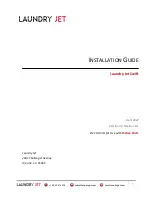
<7. General Specifications>
7-33
IM 01C25W01-01EN
Flange pressure rating
1 ...........................
class150
A ........
10K
H ........
PN10/16
2 ...........................
class300
B ........
20K
K ........
PN25/40
4 ...........................
class600
C ........
30K
5 ...........................
class900
D ........
40K
6 ...........................
class1500
Flange type
S .........................
for general use
Flange material
A ......................
JIS S25C
B ......................
304 SST*
5
C ......................
316 SST*
5
S ......................
316L SST*
5
*
11
Extended outside diameter
-4 ..................
3.78±0.02 inch (96±0.5 mm)
-3 ..................
2.8±0.02 inch (71±0.5 mm)
Extended length
2 .................
Length (X2) = 1.97±0.02 inch (50±0.5 mm)
4 .................
Length (X2) = 3.94±0.02 inch (100±0.5 mm)
6 .................
Length (X2) = 5.91±0.02 inch (150±0.5 mm)
8 .................
Length (X2) = 7.87±0.03 inch (200±0.8 mm)
--------
N ..............
Always N
Table 3a. Diaphragm material and Sealing face material
Wetted parts material
*
1
[Diaphragm material]
[Sealing face material]
SC .......................
[S] 316L SST
[C] 316 SST
SS ........................
[S] 316L SST
[S] 316L SST
HC .......................
[H] Hastelloy C-276*
8
#
[C] 316 SST
HS .......................
[H] Hastelloy C-276*
8
#
[S] 316L SST
HH .......................
[H] Hastelloy C-276*
8
#
[H] Hastelloy C-276*
8
TS ........................
[T] Tantalum
[S] 316L SST
VC .......................
[V] 316L SST
[C] 316 SST
(Thickness: 0.0055 inch (0.14 mm))
VS ........................
[V] 316L SST
[S] 316L SST
(Thickness: 0.005 inch (0.14 mm))
JC ........................
[J] Hastelloy C-276*
8
*
9
#
[C] 316 SST
(Thickness: 0.006 inch (0.15 mm))
JS ........................
[J] Hastelloy C-276*
8
*
9
#
[S] 316L SST
(Thickness: 0.006 inch (0.15 mm))
JH ........................
[J] Hastelloy C-276*
8
*
9
#
[H] Hastelloy C-276*
8
(Thickness: 0.006 inch (0.15 mm))
*1:
Users must consider the characteristics of selected wetted parts material and the influence of process fluids. The use of
inappropriate materials can result in the leakage of corrosive process fluids and cause injury to personnel and/or damage
to plant facilities. It is also possible that the diaphragm itself can be damaged and that material from the broken diaphragm
and the fill fluid can contaminate the user’s process fluids.
Be very careful with highly corrosive process fluids such as hydrochloric acid, sulfuric acid, hydrogen sulfide, sodium
hypochlorite, and high temperature steam (150°C [302°F] or above). Contact Yokogawa for detailed information of the
wetted parts material.
*2:
Refer to section 12 for limitation of capillary length.
*3:
Applicable for option code /R (Operating temperature correction). In case of “without PVC sheath”, must be select code V.
*4:
Not applicable to different size between Process connection size and Flange size.
*5:
Forged version of the material may be used.
*6:
Applicable for Diaphragm material code S and H.
Inside of isolating diaphragms (fill fluid side) are gold plated, effective for hydrogen permeation.
*7:
Applicable for Diaphragm material code T.
*8:
Hastelloy C-276 or N10276.
*9:
Not applicable for process connection size code 3.
*10: The specified capillary length includes the extension length (X2) and the flange thickness (t).
*11: Not applicable for flange standards code D.
*12: In case of compensation capillary type, must be select code “-C” on seal system location code “-L”.
*13: Applicable for process connection size code “3” with capillary length more than 6 m.
















































